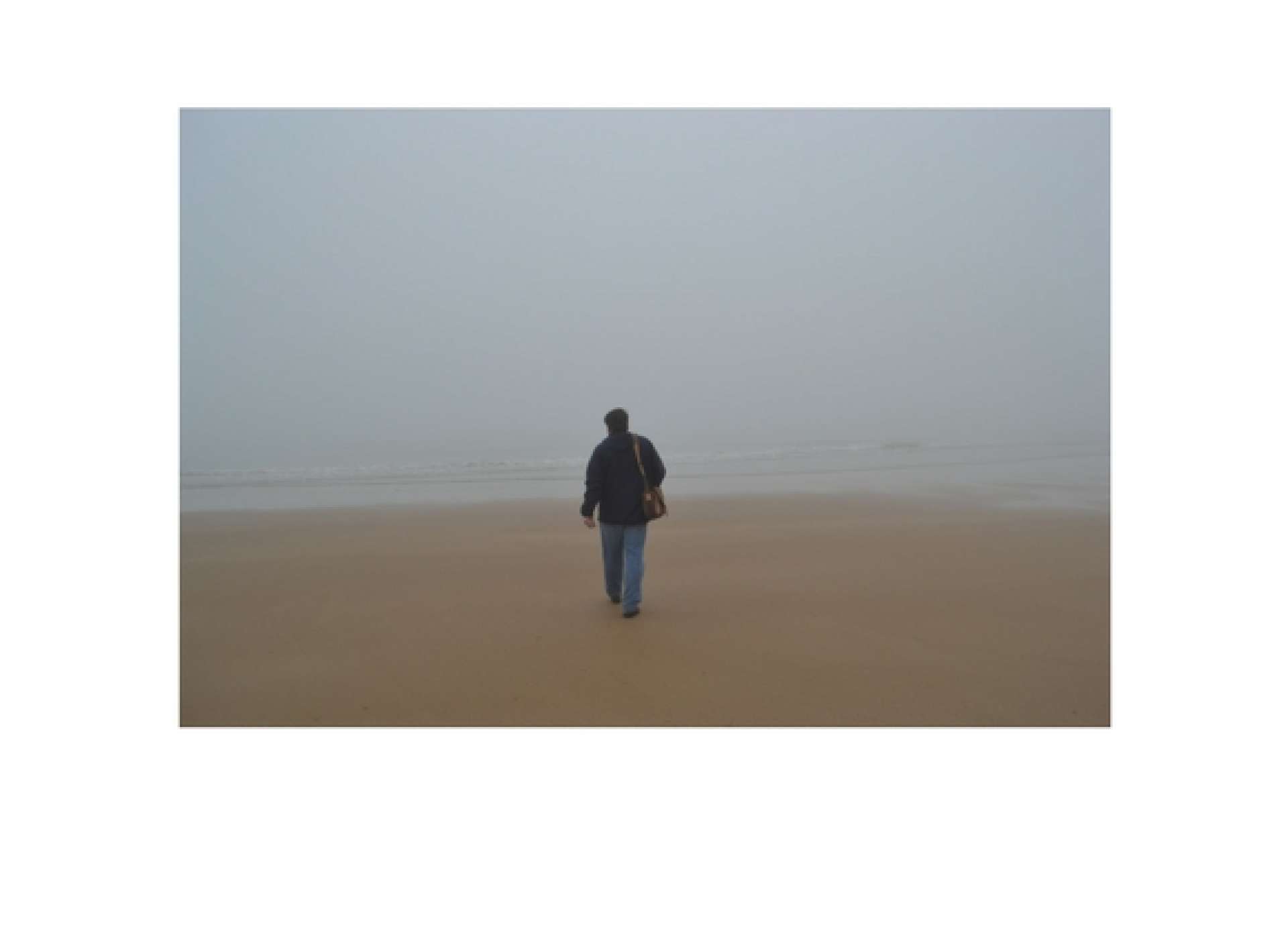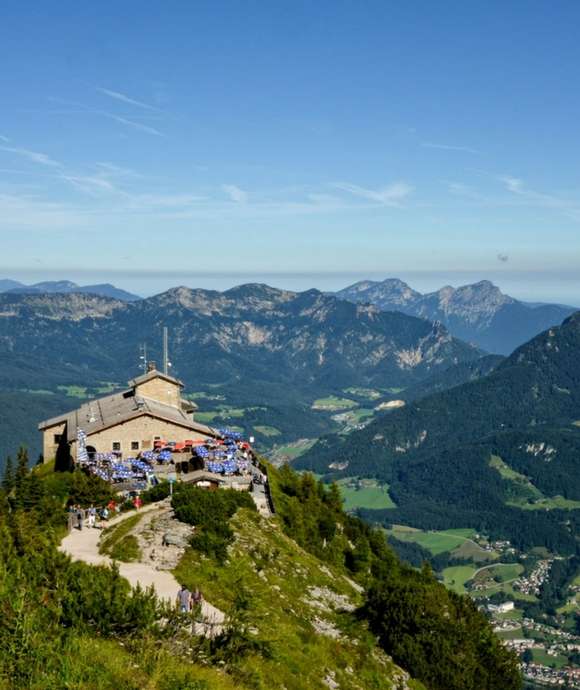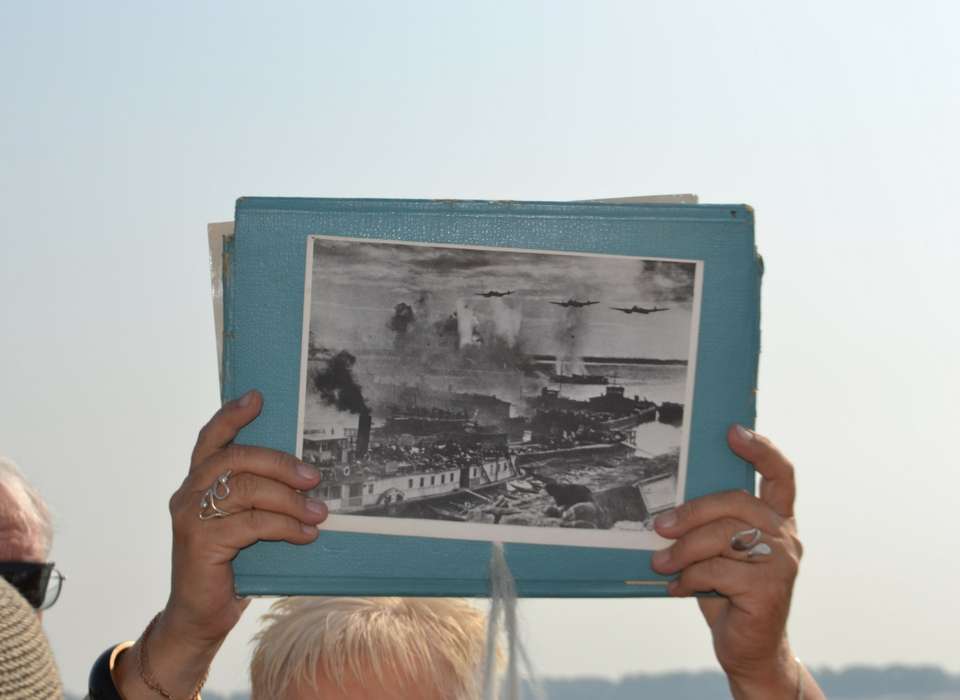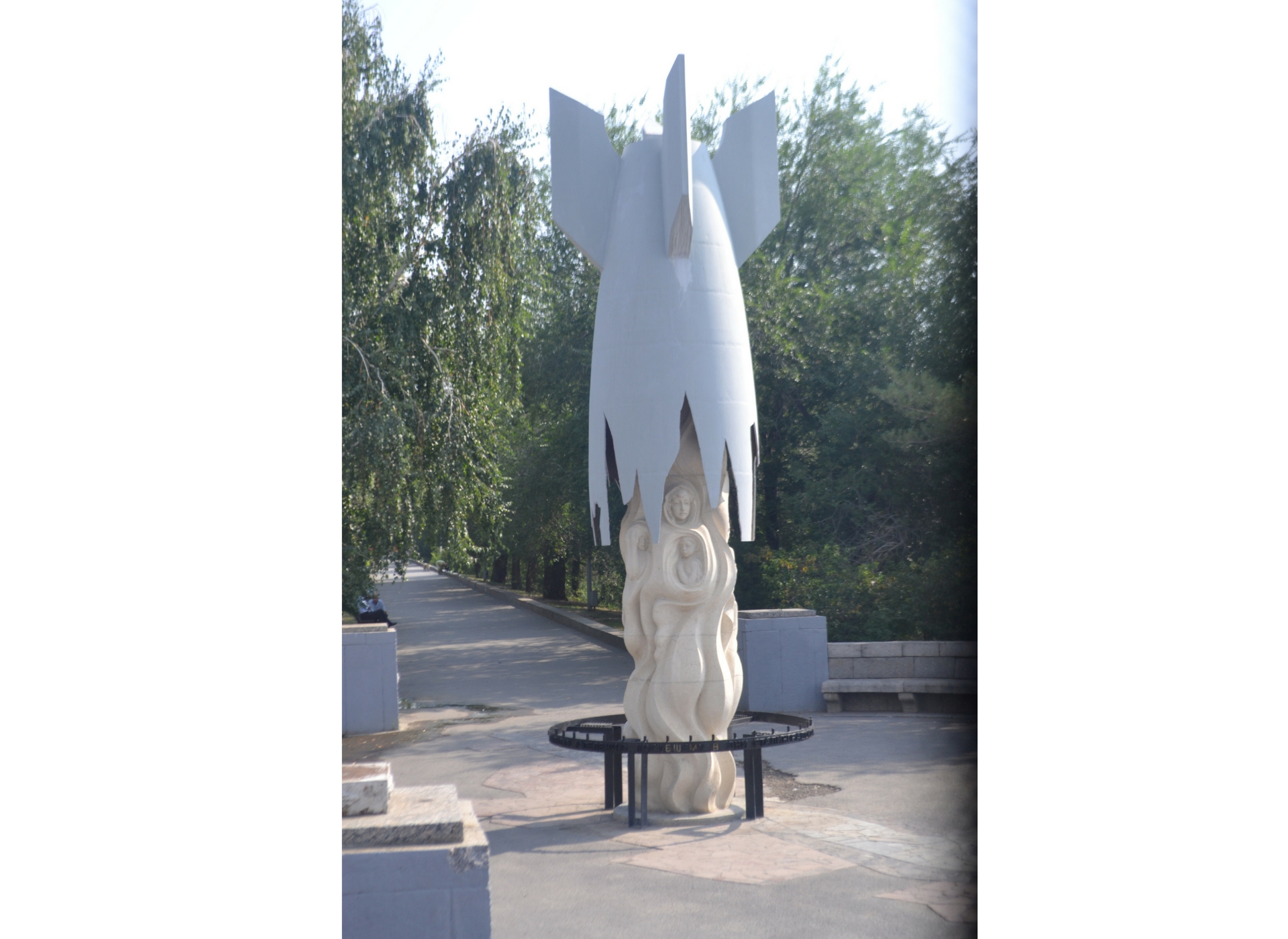In a previous post, I included a photograph I took of an old photograph being held by one of our tour guides on vantage point above the Volga River. It depicted what was happening in Stalingrad in 1942 on the same exact spot where we were standing. In the old photograph, the entire city burns from the German Luftwaffe’s relentless aerial bombing. Historian Antony Beevor noted that some estimates claim that 40,000 people were killed (out of a population of 600,000 in the city in 1942) in the first week of the bombing campaign. At the top of this post is another photograph held by the guide, in which the Luftwaffe and the damage being inflicted is clearly visible.
But history is all around us, and sometimes surprises us when we don’t expect it. After leaving the riverbank, we boarded a bus to continue our tour. As we made our way through the city to our next destination, we passed a park with a monument that caught my eye. Our guide explained that while we were not scheduled to stop, this particular monument was dedicated to the women and children of Stalingrad who were underneath the Luftwaffe’s bombs. I managed to take a photograph through the window of the bus.
The statue depicts not only man-made death raining down from above, but also the innocent faces of a mother and child caught in the fires of the burning city—a depiction that takes on an aura of saintliness. To some, the rising smoke and flames might suggest a spiritual transcendence of the victims, an element of hope and meaning to accompany the slaughter of innocence. But to my eye, it is unforgettably tragic. I am only glad that, unpredictably, I saw this testament to memory, innocence, and the evil of war, and that here I can further its life and reach with readers.

"No matter one’s age, travel is a unique and exciting educational experience. In my work, I have had the opportunity to reflect on history, events, and people in the places where they experienced life. Through the viewfinder, we can not only find history and perspective, but create memory, and evoke our evergreen past."
– Keith Huxen, PhD, Senior Director of Research and History, The National WWII Museum

Keith Huxen
Keith is the former Senior Director of Research and History in the Institute for the Study of War and Democracy at The National WWII Museum.
Cite this article:
MLA Citation:
APA Citation:
Chicago Style Citation:








![Max Fuchs, New York City cantor, sings as Rabbi Sydney [sic] Lefkowitz, Richmond, VA, conducts the first Jewish services from Germany.](/sites/default/files/styles/max_650x650/public/2025-10/image1.jpg)



